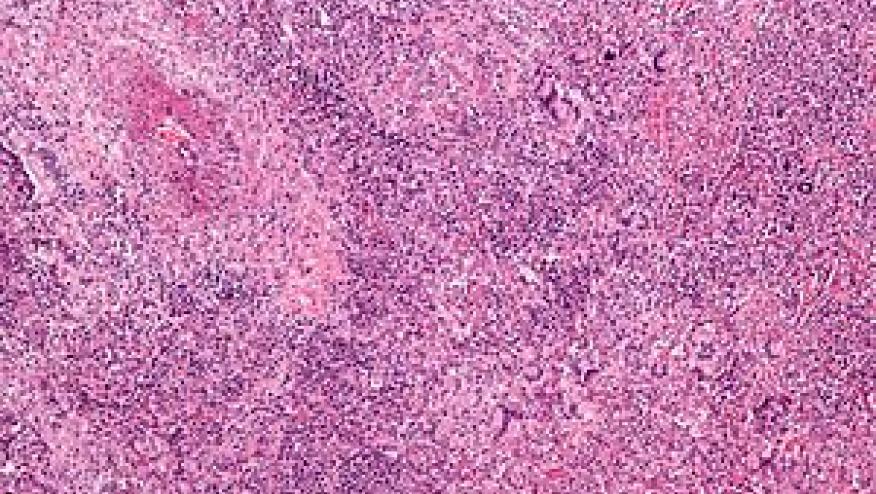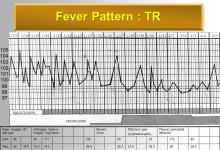CanVasc Recommendations for ANCA-Associated Vasculitis Save

ANCA associated vasculitis (AAV) has undergone considerable study and advances in the last few years.
This includes new therapes and new guidelines, including the EULAR guidelines for AAV published earlier this year and noted on RheumNow.
The Canadian Vasculitis research network (CanVasc) just published its recommendations regarding the diagnosis and management of AAV in the last issue of the Journal of Rheumatology.
Nineteen recommendations and 17 statements were developed by an expert panel and literature review of published supporting evidence, and expert consensus to promote best practices and improving healthcare delivery for patients with AAV.
Summary table of the CanVasc recommendations and statements.
| Recommendation or Statement | Text of the Recommendation or Statement | Evidence Level/strength* |
|---|---|---|
| Diagnosis | ||
| Statement 1 | ANCA testing with ELISA and IIF methods should be performed for diagnostic purposes in patients in whom there is clinical suspicion of a systemic small- and/or medium-sized vessel vasculitis. | |
| Statement 2 | Tissue biopsy should be considered in cases of suspected AAV to confirm diagnosis. | |
| Classification of disease severity in AAV | ||
| Statement 3 | Patients with AAV should have the extent and severity of their disease categorized as “severe” at the time of diagnosis and in case of subsequent relapse if they have life- or major organ-threatening manifestations, to allow therapy to be tailored accordingly. | |
| The role of referral centers for vasculitis | ||
| Statement 4 | Patients with AAV, particularly those with challenging disease, should be managed at or in collaboration with a referral center for vasculitis. | |
| Remission induction for newly diagnosed disease | ||
| 4.1 Remission induction in severe (organ- and/or life-threatening) newly diagnosed disease | ||
| Recommendation 1 | We recommend remission induction therapy with a combination of high-dose GC and CYC in patients with severe newly diagnosed GPA, MPA, or EGPA. | 1B/A |
| Recommendation 2 | We recommend using high-dose GC with RTX as first-line remission induction therapy in patients with severe GPA or MPA in whom CYC is contraindicated or in whom CYC presents an unacceptable risk of infertility. | 1B/A |
| Recommendation 3 | CYC dose should be adjusted in patients > 60 yrs of age and in those with renal impairment. | 1B/B |
| Statement 5 | CBC and serum creatinine level must be monitored in patients treated with CYC. In patients with abnormal CBC results, temporary withholding of CYC and subsequent dose adjustments may be necessary depending on the degree of leukopenia. | |
| Recommendation 4 | We recommend that the remission induction therapy with CYC, combined with GC, last a minimum of 3 to a maximum of 6 mos. Once remission is achieved, CYC should be stopped and the patient switched to a different maintenance therapy. | 1B/A |
| Recommendation 5 | We recommend that GC be given in adults at an initial dose of 1 mg/kg/day PRED-equivalent for remission induction purposes. This may be preceded by pulsed methylprednisolone (0.5 g/day to 1 g/day for 1 to 3 days) in patients with life-threatening disease and/or major organ involvement. | 2A/B |
| Recommendation 6 | Prophylaxis against Pneumocystis jirovecii infection should be given to patients receiving CYC or RTX. This prophylaxis consists, in the absence of allergy, of trimethoprim/sulfamethoxazole compounds (800/160 mg 1 tablet 3 times per week or 400/80 mg daily). | 3/C |
| Recommendation 7 | There is insufficient evidence to support a recommendation that plasma exchange be used as first-line therapy in any patients with AAV. Plasma exchange may be a reasonable adjuvant therapy for patients who clinically deteriorate because of active vasculitis despite ongoing remission induction therapy with high-dose GC and CYC or RTX. | 4/D |
| 4.2 Remission induction for limited or nonsevere (nonorgan- and nonlife-threatening) newly diagnosed disease | ||
| Recommendation 8 | In patients with limited and/or nonsevere GPA that is nonlife-threatening and without any major organ involvement, remission induction regimen with MTX in combination with GC can be used. | 1B/A |
| Recommendation 9 | Patients with nonsevere EGPA or nonsevere MPA without renal involvement can be treated with GC alone for remission induction. At present, there is no consensus on the use of any immunosuppressant agents in combination with GC in patients with EGPA or MPA that are nonsevere (including those with mononeuritis multiplex). | 2B/C |
| Remission maintenance therapy | ||
| Recommendation 10 | In patients with severe AAV in remission after a combined CYC-GC–based induction treatment, maintenance therapy can be based on AZA or MTX, initially in combination with low-dose GC. LEF or mycophenolate mofetil may be alternative agents in patients not tolerating or with contraindications to AZA and MTX. | 1B/B |
| Recommendation 11 | In patients with severe AAV in remission after a combined CYC-GC–based induction treatment, maintenance therapy with RTX infusions is an alternative to AZA, especially for those patients with PR3-ANCA–positive GPA. | 1B/A |
| Statement 6 | To date, there is no definitive evidence to guide decisions for maintenance therapy after remission induction with RTX. | |
| Statement 7 | Low-dose GC should be part of the initial remission maintenance therapy after remission is achieved; there is not enough evidence yet to support further recommendation on the optimal duration of low-dose GC. | |
| Recommendation 12 | We recommend the use of AZA, MTX, or their alternatives (as per Recommendations 10 and 11) for remission maintenance therapy to be continued for a minimum of 18 mos after successful remission induction. There is not yet enough evidence to support further recommendation on the optimal duration of their use for maintenance. | 3/C |
| Recommendation 13 | The use of trimethoprim/sulfamethoxazole (800/160 mg twice daily) as remission maintenance therapy can be considered in GPA as an adjuvant to immunosuppressant or after the cessation of maintenance immunosuppressive treatment. | 3/C |
| Recommendation 14 | Topical therapies may be considered, in combination with the systemic therapy and in collaboration with ENT subspecialists, to alleviate the symptoms of upper airway and ENT disease. | 3/C |
| Relapsing disease | ||
| Recommendation 15 | We recommend remission induction of a major organ- or life-threatening relapse with either CYC or RTX in conjunction with high-dose GC. In patients who already received CYC for initial remission induction or a previous disease flare, we recommend using RTX for remission reinduction. | 1B/A |
| Recommendation 16 | There is insufficient evidence to support a recommendation that plasma exchange be used as first-line therapy in all patients with relapsing AAV with severe renal (GFR 50 ml/min) or pulmonary hemorrhage. Plasma exchange may be a reasonable adjuvant therapy for patients who clinically deteriorate because of active relapsing vasculitis despite ongoing remission induction therapy with high-dose GC and CYC or RTX. | 4/D |
| Recommendation 17 | We recommend that relapses that are nonsevere, i.e., nonlife- and nonorgan-threatening, be treated with an increase in GC dose in addition to optimizing the patient’s concurrent immunosuppressant agent. | 3/C |
| Refractory disease | ||
| Recommendation 18 | We recommend the use of RTX in combination with GC in patients with severe GPA or MPA who fail to respond to CYC as remission induction therapy. | 3/C |
| Statement 8 | Patients with refractory disease should be managed in a referral center for vasculitis in collaboration with subspecialists with experience in managing such patients. | |
| Statement 9 | Patients with EGPA and persistent asthmatic symptoms, despite remission of their vasculitic manifestations, should be managed in collaboration with a physician subspecializing in asthma management. | |
| Additional and experimental therapies | ||
| Statement 10 | In patients in whom the aforementioned therapies are ineffective, contraindicated, or poorly tolerated, consideration can be given to alternate, additional, and/or experimental therapies in collaboration with a referral center for vasculitis. | |
| Followup of patients with AAV | ||
| Statement 11 | Patients with AAV should be followed regularly for many yrs with full clinical assessment and routine laboratory work to assess disease course and track for disease activity and disease- or treatment-related damage. | |
| Statement 12 | All patients previously treated with CYC should have a urinalysis every 3–6 mos as a lifelong means of screening for CYC-induced bladder toxicity. If micro- or macroscopic hematuria is present, in the absence of an alternate explanation, the patient should be referred for consideration of a cystoscopy. | |
| Statement 13 | As part of their lifelong annual followup, CV risk factors (including smoking status, diabetes, hypercholesterolemia, HTN, and obesity) and risk for osteoporosis should be systematically assessed, with treatment as needed according to the current respective guidelines for each of these conditions. | |
| Special patient groups | ||
| Statement 14 | Women with AAV should not consider pregnancy earlier than 6 mos after sustained remission of their disease has been achieved. Women with AAV planning pregnancy and those pregnant should be managed in close collaboration with an obstetrician with expertise in this field and/or in high-risk pregnancies. | |
| Statement 15 | There are no pediatric-specific management guidelines for pediatric AAV yet, and most knowledge in pediatric AAV is adapted from adult research. Management of children with AAV should be provided by pediatric physicians at an academic healthcare center, in collaboration with referral centers for vasculitis and/or centers with special interest in pediatric vasculitis. | |
| Statement 16 | AAV in children should be classified at the time of diagnosis based on the childhood EULAR/PRINTO/PReS criteria so that therapy can be tailored accordingly. | |
| Statement 17 | Children with newly diagnosed AAV should be treated according to adult recommendations for induction of remission and then maintenance, with medication dose adjusted for this specific population. | |
| Recommendation 19 | In children, severe relapsing AAV or severe AAV refractory to the combination of CYC and GC (with major organ involvement or life-threatening manifestations) should be treated with RTX in combination with GC. | 4/D |










If you are a health practitioner, you may Login/Register to comment.
Due to the nature of these comment forums, only health practitioners are allowed to comment at this time.